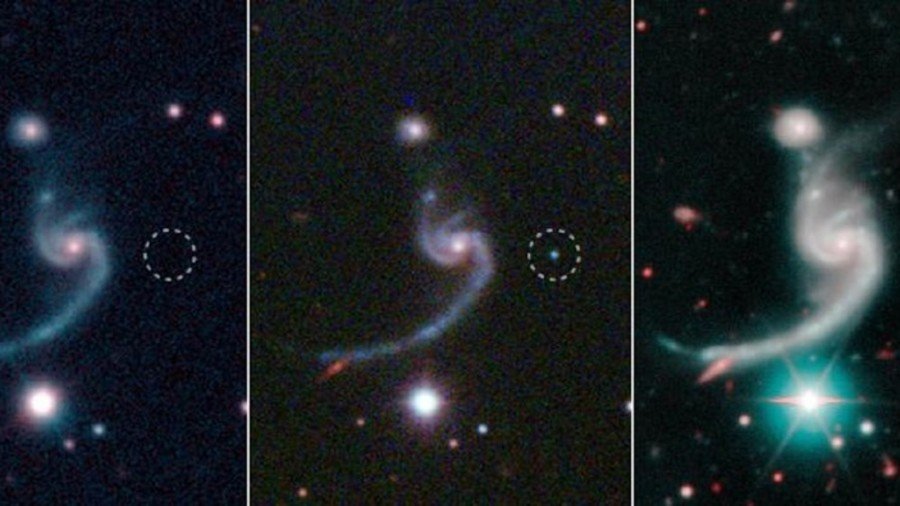A star is born: Astronomers witness birth of binary star system for 1st time (IMAGE)

A group of astronomers observing the strange quiet death of a massive star, which exploded in a “peculiar” fashion some 920 million light years from Earth, also witnessed the birth of binary star system for the first time.
READ MORE: Hubble detects never-before-seen features around neutron star
Astronomers from the California Institute of Technology and Carnegie Science Institute published their findings in the journal Science on Thursday. In the study, they describe the strange event in which the huge star exploded in a surprisingly faint and rapidly fading supernova - in stark contrast to the dramatic bang which exploding stars usually produce.
The star was at least eight times the mass of our sun, yet it only ejected one-fifth of our sun’s mass during the explosion. Usually, a star’s core collapses inward before exploding completely in a powerful, violent, blast.
The event was captured by the Palomar Observatory, which conducts a nightly survey of the sky in the search of supernovae.
.@CarnegieAstro's Tony Piro was part of a @Caltech-led team of astronomers who observed the peculiar death of a massive star that exploded in a surprisingly faint and rapidly fading supernova, possibly creating a compact neutron star binary system. MORE: https://t.co/qgpVVrKzxFpic.twitter.com/zdMBG5VxjZ
— Carnegie Science (@carnegiescience) October 11, 2018
“We call this an ultra-stripped envelope supernova and it has long been predicted that they exist,” said Mansi Kasliwal, Caltech assistant professor of astronomy. “This is the first time we have convincingly seen core collapse of a massive star that is so devoid of matter."
When the team of researchers began looking into why the star exploded, but was missing the mass to make it go ‘boom’, they learned that the star wasn’t actually alone. In fact, it had a companion star that the team couldn’t see and which gravitationally siphoned away most of the star's mass before it exploded as a supernova.
The result is a group of leftover mini neutron stars, about the size of a small city, that are so dense they contain more mass than the sun. Or as the researchers explained it, a teaspoon of the neutron star would weigh as much as a mountain.
The event marks the first time scientists witness the birth of a compact neutron star binary system. The close proximity of the stars means they will eventually collide and succumb to an explosive neutron star collision.
Like this story? Share it with a friend!















